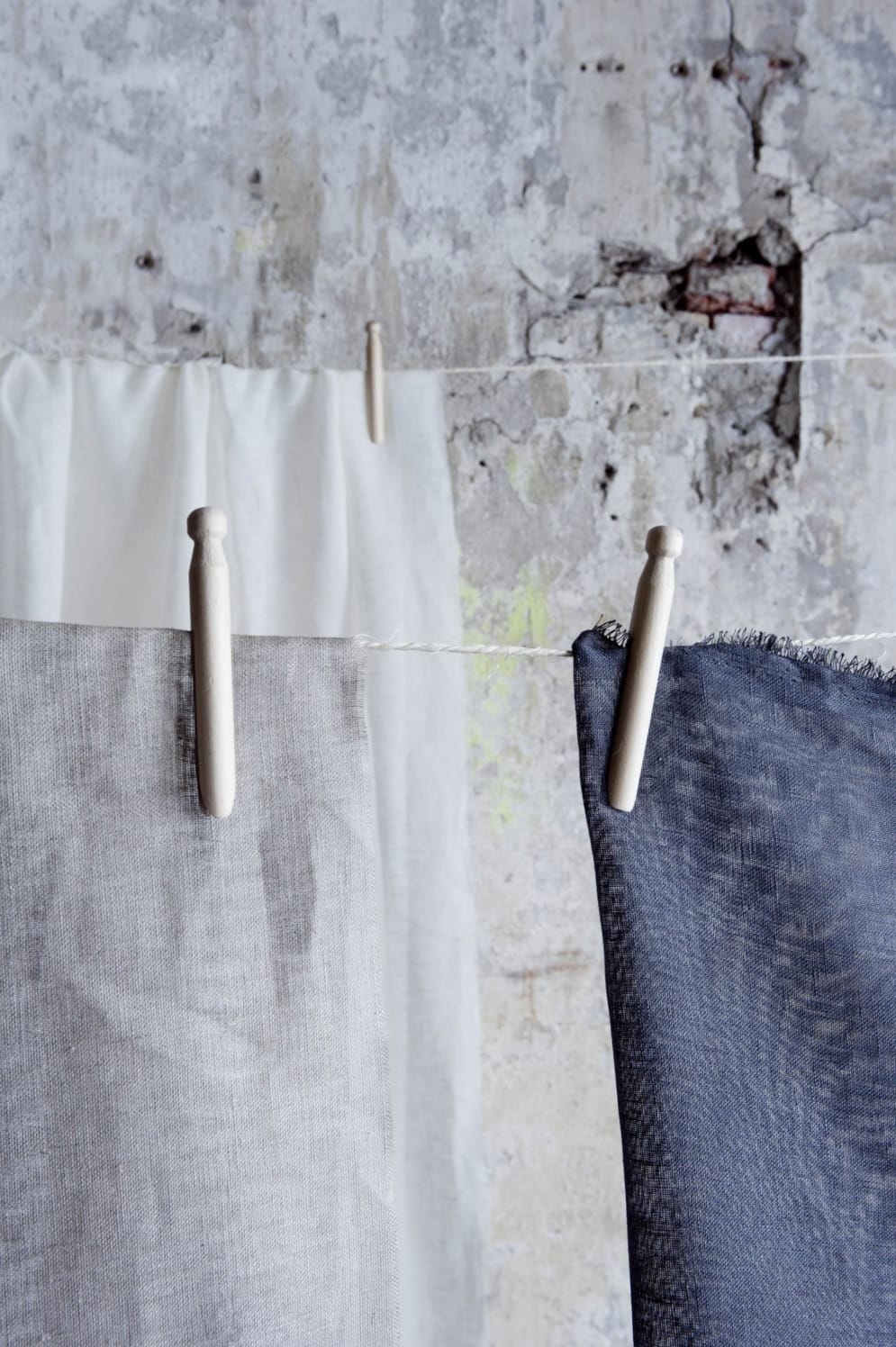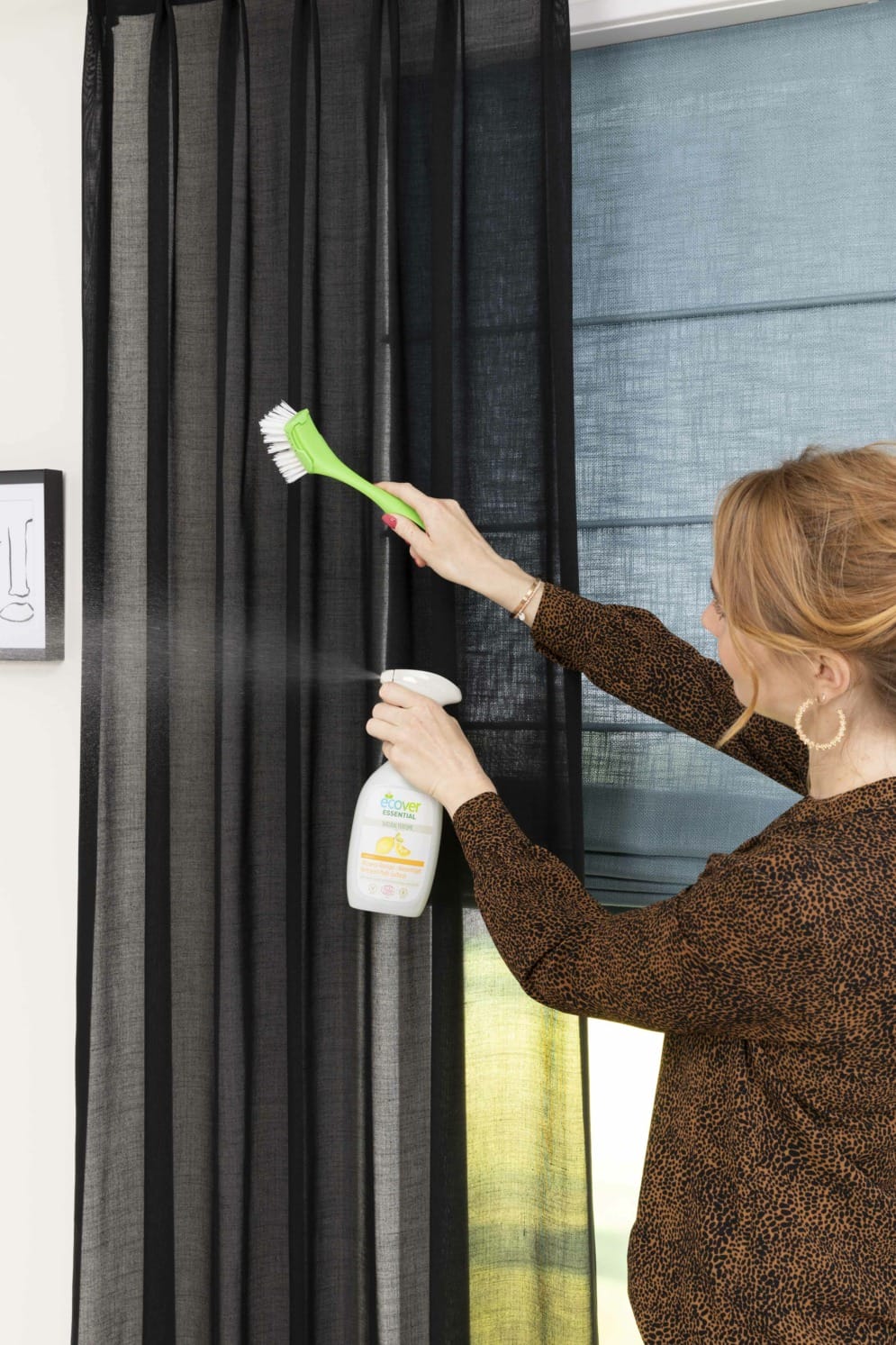Maintaining your curtains
Proper maintenance of curtains will give them a longer life. The following tips will help you enjoy your curtains for longer:
- Give new curtains some time, curtains need to hang out to fold properly. Make sure curtains hang 'free'. Don't let the curtains scrape along ceilings, rough walls or window sills.
- Use pull handles or Curtain Grip for opening and closing curtains. This prevents dirty handprints and pilling.
- Curtains are not suitable as sun protection. In particular, qualities with cotton, viscose and linen can discolour when exposed to bright sunlight.
- Don't rush into cleaning curtains. When fabric is manufactured, a special finishing method is used that ensures the beautiful look of your curtains. Cleaning will affect this finish.
- Outdoor air does a curtain good! Hang the curtains outside for a few hours, preferably in the mist, and they will be fresh again.
- Dust your curtains by using a hoover with a soft brush or nozzle to clean them.
- For an extra nice fall at the bottom, iron the hem at the back of the fabric sharply.
- Caution! Do not iron too hot and always on the reverse side. Try a piece of hem first. Be especially careful with steam, as this is 100° C!
- For the right cleaning advice for your curtains, look at the sewn-in washing label, at the top right of the curtain.

Cleaning instructions
Below are the guidelines on cleaning curtains, Roman blinds and velour curtains.
Cleaning instructions for curtains, inbetweens and net curtains
To achieve the best results when cleaning curtains, inbetweens and net curtains, we recommend chemical treatment in most cases. In general, dry cleaning preserves the authenticity of the dyes, minimises the fabric's grip and minimises any shrinkage. However, there are curtains that should not be dry-cleaned, which is always indicated by the treatment symbols on the sewn-in care label.
If the curtains, inbetweens or net curtains may nevertheless be washed themselves according to the recommended treatment symbols, the following rules should be observed:
- First, remove the hooks from the curtain.
- Use plenty of suds in tub or bath (do not leave in suds).
- For machine washing, fill the drum up to 2/3 full to avoid large friction of the fabric with the washing drum, which can cause rub marks. Note: check the drum capacity of your washing machine.
- Use a fine detergent.
- Maximum temperature according to washing instructions.
- Do not wring and scrub and do not spin.
- Wet hanging.
- Keep in mind that a shrinkage of 3% may occur.
Cleaning instructions for Roman blinds
To clean a Roman blinds, the cleaning instructions can be used. Take the following steps before cleaning:
- Loosen the pull-up cords at the back of the pleated curtain.
Then remove the cords, pulling them through the eyelets. - Remove the fabric from the Velcro.
- If present, remove the ribs and treat the fabric according to the cleaning instructions.
Velour curtains
Velour curtains cannot be self-cleaned; misting can be done. If velour curtains are wrinkled or squashed, you can mist them with a plant sprayer and then keep them closed until dry. We recommend using pull rods or Curtain Grip for opening/closing the curtains to keep them beautiful for as long as possible.
Composition of curtains
Each curtain fabric in our collection has its own characteristics and cleaning instructions which are listed on the sewn-in label.
Shrinkage
Curtains made of natural materials, such as cotton, linen or viscose, can become shorter or longer due to changes in humidity in a room. For instance, curtains shrink when the air is dry and lengthen when the air is humid. Curtains made of natural yarns, such as cotton or linen, can shrink when you wash them. Curtains made of synthetic fibres, such as polyester, are the most 'shape-retaining' and suffer little shrinkage. We therefore have a wide choice of recycled polyester fabric qualities.

